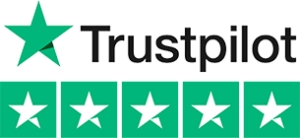Supporting LGBTQ+ colleagues in the workplace is absolutely crucial, not least because it is a protected characteristic. Over this past decade, dozens of organisations have taken steps to be more inclusive toward their LGBTQ+ employees. However, not everyone chooses to disclose their sexuality when applying for a job.
It can still be terrifying for someone to admit how they identify to others, especially if it’s their boss or colleagues.
Whether it’s shared or private information, it’s important that there is inclusivity in the workplace for these employees, just like there is for others.
What Does LGBTQ+ Stand For?
LGBTQ is an initialism representing sexuality and gender identity. It stands for lesbian, gay, bisexual, transgender, and queer (or questioning).
LGBT is an umbrella term for those who feel that their gender identity or sexuality cannot be comfortably defined as one thing. The original acronym, LGBT, has since adapted to include other identities and sexualities but remains the most widely recognised. You may commonly see LGBTA or LGBTQ, and LGBTQ+ as well.
The ‘plus’ represents other sexualities, such as pansexuality or asexuality, that aren’t represented in the acronym. This symbol can also be used to represent allies – people who are typically ‘cishet’.
‘Cishet’ is a common abbreviation used among the LGBT community. It describes a person who is both cisgender and heterosexual – someone who identifies as the gender they were assigned at birth and is attracted to the opposite sex.
What Issues Might An LGBTQ+ Colleague Face?

The Equality Act of 2010 was put in place to protect LGBTQ persons from direct and indirect discrimination, harassment, and victimisation in a working environment. The act includes that a duty must be made by public bodies to show support of and promote equality of sexual identities.
For example, employers cannot refuse to employ a person or refuse a person access to resources due to their sexual orientation.
Direct discrimination refers to treating a person unfairly due to their protected characteristics, like being gay. Additionally, we have indirect discrimination. Sometimes, an employer might not even realise that their actions are indirectly discriminative.
A new measure may be introduced to the workplace. But it’s a measure that really only applies to a specific group of people. This may place the LGBT employees in a disadvantaged situation. For example, long hour work shifts need to be taken by those who have no responsibilities such as child-care. So those who are parents will not take on these long hour work shift because they have other responsibilities.
Statistically, a same sex couple is less likely to have child-care responsibilities and so will have no choice but to do said shifts. This puts them at a disadvantage and it may be justified by the employer.
Other forms of discrimination in the workplace are associative and perceptive. If an employee was to treat another colleague unfairly because they knew a friend or family member was LGBTQ, this is associative discrimination.
Perceptive discrimination is acts of prejudiced behaviour against an individual you think is LGBTQ, even if they’re not.
Acts of indirect and associative discrimination could also come in the form of microaggressions. Microaggressions are subtle, indirect (and sometimes unintentional) acts against protected groups. An example of a microaggression could be treating a gay individual more femininely than you would a heterosexual male.
How Can I Support LGBTQ+ Colleagues In The Workplace?
Educating Yourself Is Key.
Just like with all communities, it’s important to learn about them in order to fully understand and have awareness. One of the best ways to learn is education.
Learn about the history, perhaps read a book about the culture and political significance of Pride Month. Do you know why Pride Month is in June? It’s because the Stonewall Rebellion happened that month.
Educating yourself is fine and dandy but you know what’s better? Encouraging others to join you. Researching and taking initiative to learn about LGBT rights and the community really shows your willingness to look for information rather than leaving it up to LGBT individuals to inform you.
Policies
Including policies within the workspace to be all-inclusive helps to include those who may not have been included before. These can be new policies, such as extra equality policies, or updating old policies. Like dress codes.
Something seemingly harmless can actually be quite harmful to specific individuals. Dress codes imply expectations and aren’t always gender neutral. Making sure previous policies are updated to be gender neutral is key to being inclusive towards all employees.
Pronouns
Some individuals may prefer to use pronouns other than he/him and she/her, for example they/them. It’s important that everyone in the workplace knows the preferred pronouns of their colleagues and supervisors in order to make them feel accepted and comfortable.
Training
Training colleagues to eliminate discrimination is essential to a healthy and safe working environment. Updating pre-existing training guides/presentations to include LGBTQ individuals is necessary to provide equal opportunities to every employee.
These training guides or presentations should cover important topics such as:
- LGBTQ+ terminology
- Gender-neutral language
- Addressing implicit bias
- Informing employees on microaggressions
- Reporting any and all discrimination and harassment claims
- Supporting LGBTQ and being an ally
The Equality Act of 2010 may be in place, but that doesn’t get rid of the problem. We have laws in place all over the world with more serious consequences and yet, they’re still broken.
Everyone should feel comfortable in their workspace. It’s up to every employee to maintain rules and retain a high standard of treatment of others.
Contact Us
If you want your best team to work, join our workplace app and contact a member of our team today!
Alternatively, you can take a look at our blog for more information and tips regarding employee wellbeing and the workplace.










